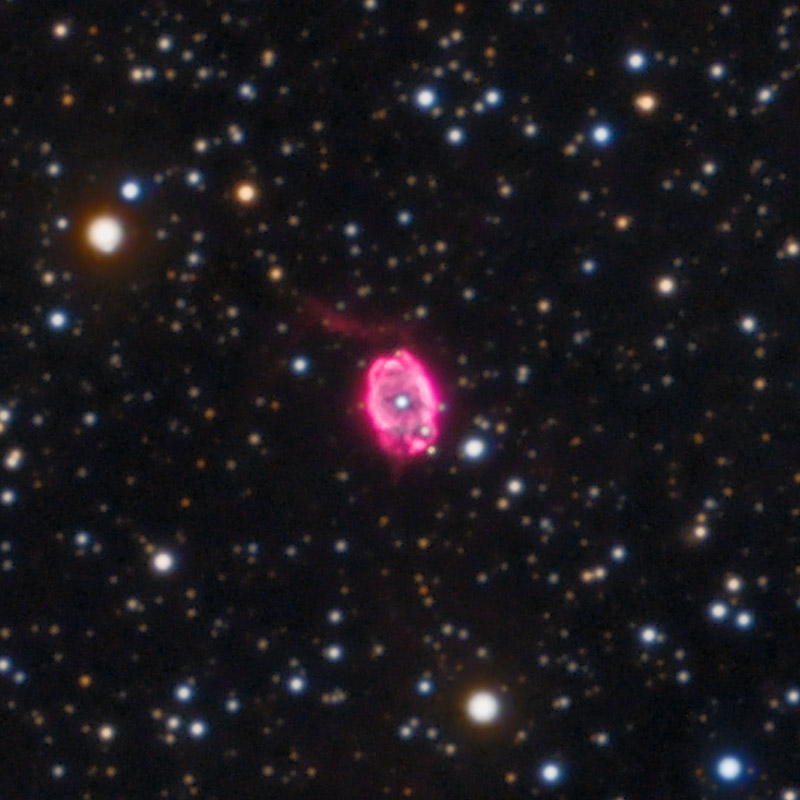| Description | Images |
Object name: NGC0040Designation(s): NGC0040, NGC 40 is a very red planetary nebula in Cepheus about 3000 to 3500 light-years away. The distance to these objects is hard to pin down. Papers indicate this nebula is interacting with the interstellar medium (ISM). It has two jets, a long one to the north and a fainter shorter one to the south. Many images on the net fail to pick these up which surprised me. The north arm is bent possibly due to the interaction with the ISM. See http://www.aanda.org/index.php?option=com_article&access=bibcode&Itemid=129&bibcode=2002A%2526A...391..689MFUL for more on this. Related Designation(s):2MASS J00130099+7231190, 87GB 001015.0+721426, 87GB[BWE91] 0010+7214, GALEXASC J001301.16+723119.7 , GB6 J0012+7231, HD 000826, HIP 001041, IRAS 00102+7214, IRAS 00102+7214 ID, KNoWS J001302+723123, NGC 0040, NGC0040, NVSS J001301+723119, P-K 120+09 01, PN G120.0+09.8, SSTSL2 J001301.03+723119.1, UVQS J001301.23+723118.8, V0400 Cep, VERA J0013+7231, [MGD2014] 0010.2+7214, [RCR2012] 01, |

